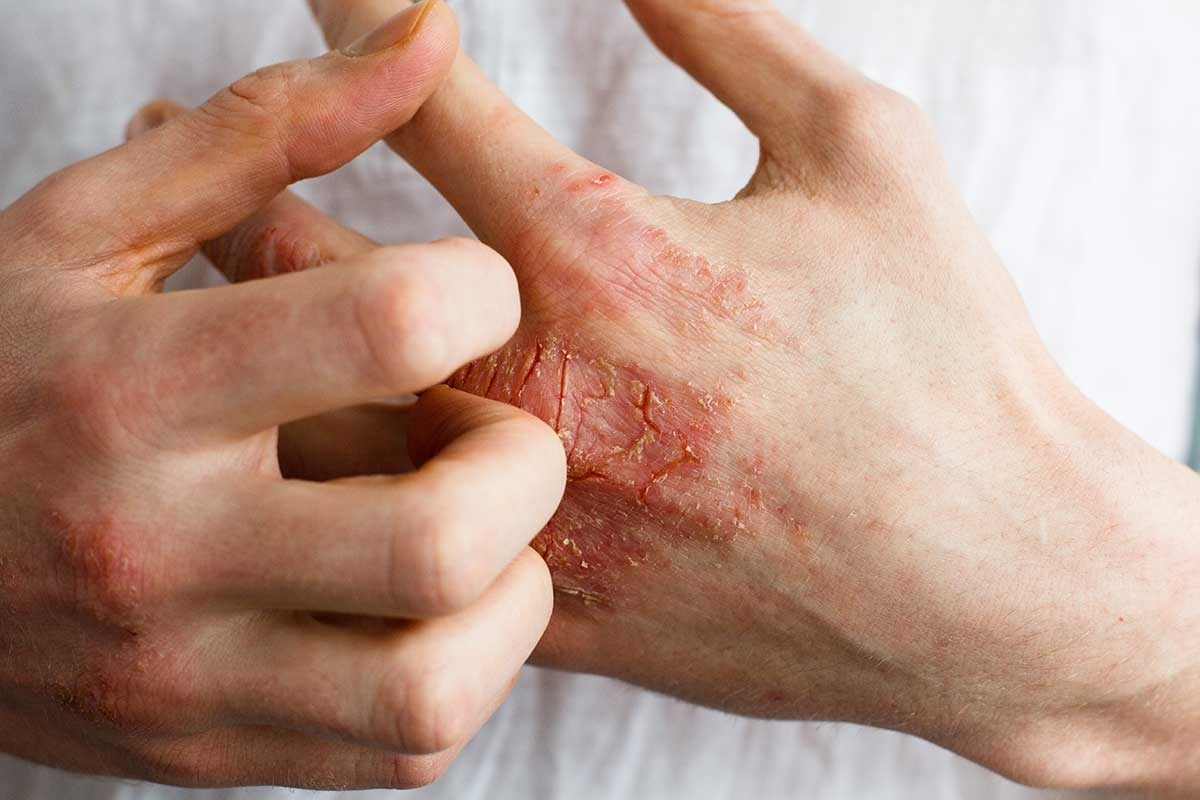Dermatitis: Understanding Contact Dermatitis and Atopic Dermatitis
Skin conditions like dermatitis can significantly impact quality of life, causing discomfort and persistent symptoms. In this article, we’ll explore the two most common forms—contact dermatitis and atopic dermatitis—unpacking their causes, symptoms, and effective treatments.
What Is Dermatitis?
Dermatitis refers to inflammation of the skin, often caused by various triggers that irritate or damage the skin barrier. It can manifest in several forms but is generally characterized by inflammation, redness, and itching.
Common Symptoms
Dermatitis symptoms include:
- Redness: The skin often appears inflamed and discolored.
- Itching: Persistent itching can lead to scratching and further irritation.
- Scaling and flaking: The skin may become dry and start to peel.
- Blisters: In some cases, small fluid-filled blisters develop.
Types of Dermatitis
Two major types of dermatitis are:
- Contact Dermatitis: Triggered by direct contact with an irritant or allergen.
- Atopic Dermatitis: A chronic condition influenced by genetic and environmental factors.
Contact Dermatitis
What Is It?
Contact dermatitis is an inflammatory skin reaction caused by direct contact with a substance that irritates or sensitizes the skin. It’s a localized reaction and resolves once exposure to the irritant stops.
Types of Contact Dermatitis
- Irritant Contact Dermatitis:
- Caused by harsh chemicals like detergents, acids, or cleaning agents.
- The severity depends on the duration and intensity of exposure.
- Allergic Contact Dermatitis:
- Triggered by allergens like nickel, perfumes, or plants (e.g., poison ivy).
- Symptoms appear after repeated exposure to the allergen.
Common Causes
- Cosmetics: Fragrances, preservatives, or dyes.
- Cleaning products: Detergents and disinfectants.
- Metals: Jewelry containing nickel or cobalt.
- Plants: Poison ivy, poison oak, or certain flowers.
Symptoms of Contact Dermatitis
- Localized redness: The skin becomes inflamed and irritated.
- Itching: Intense itching often leads to scratching, worsening the symptoms.
- Blisters: Small, oozing blisters may form in severe cases.
- Cracks or fissures: Chronic cases can lead to dry, cracked skin.
Identifying Contact Dermatitis
Diagnosis involves understanding the patient's exposure history. Patch tests, where small amounts of potential allergens are applied to the skin, can confirm specific triggers.
Atopic Dermatitis
What Is It?
Atopic dermatitis, commonly known as eczema, is a chronic skin condition. It’s prevalent in children but can persist or recur in adults. Unlike contact dermatitis, it’s not caused by direct exposure but by a combination of genetic predisposition and environmental factors.
Triggers of Atopic Dermatitis
- Genetics: A family history of eczema, asthma, or allergic rhinitis increases risk.
- Environmental allergens: Dust mites, pollen, or mold.
- Climate changes: Extremes in temperature or humidity can aggravate symptoms.
- Emotional stress: Stress often exacerbates itching and inflammation.
Common Symptoms
- Intense itching: Especially severe at night, leading to sleep disturbances.
- Dry, flaky patches: The skin becomes rough and cracked.
- Thickened skin: Chronic scratching may cause lichenification (thickening and hardening of the skin).
- Specific areas: Commonly affects the elbows, knees, neck, and wrists.
Associated Conditions
Atopic dermatitis is often linked to other atopic diseases, such as asthma or allergic rhinitis, forming what’s known as the "atopic triad."
Diagnosing Dermatitis
Accurate diagnosis is crucial for effective management. Dermatologists use various techniques to differentiate between contact dermatitis and atopic dermatitis.
Clinical History
A detailed medical history, including exposure to potential irritants and family history of skin conditions, helps identify triggers.
Diagnostic Tests
- Patch tests: Used to detect allergens responsible for contact dermatitis.
- Exclusion tests: Eliminating potential irritants to observe symptom improvement.
Regular Follow-Ups
Continuous medical evaluation is essential to adapt treatment plans and monitor symptom progression.
Treating Contact Dermatitis
Managing contact dermatitis involves minimizing exposure and addressing symptoms.
Avoidance of Triggers
- Identify and eliminate exposure to specific irritants or allergens.
- Use protective barriers, like gloves, when handling chemicals or cleaning products.
Medications
- Topical corticosteroids: Reduce inflammation and redness.
- Antihistamines: Relieve itching and prevent scratching.
Skin Care Routine
- Use emollients to restore the skin’s moisture barrier.
- Opt for fragrance-free and hypoallergenic skin products.
Preventive Measures
- Wear protective clothing or gloves when handling known irritants.
- Choose gentle, non-irritating detergents and soaps.
Treating Atopic Dermatitis
Atopic dermatitis treatment focuses on long-term skin care and minimizing flare-ups.
Daily Skin Care
- Hydration: Moisturize the skin with thick, fragrance-free creams immediately after bathing.
- Gentle bathing habits: Use lukewarm water and limit bath time to avoid stripping the skin of natural oils.
Topical Treatments
- Corticosteroids: Effective for reducing inflammation during flare-ups.
- Calcineurin inhibitors: Non-steroidal options for sensitive areas like the face.
Advanced Treatments
- Oral medications: For severe cases, doctors may prescribe immunosuppressants.
- Biological therapies: New treatments targeting specific immune responses show promise for chronic cases.
Lifestyle Adjustments
- Minimize exposure to allergens like dust and pet dander.
- Wear breathable fabrics, such as cotton, to reduce skin irritation.
Key Differences Between Contact Dermatitis and Atopic Dermatitis
| Feature | Contact Dermatitis | Atopic Dermatitis |
|---|---|---|
| Cause | Direct contact with irritants/allergens | Genetic predisposition, environmental triggers |
| Nature | Localized | Chronic, recurring |
| Common Symptoms | Redness, blisters, itching | Intense itching, dry patches |
| Prevention | Avoid contact with triggers | Hydration and allergen control |
Prevention and Control
Preventing dermatitis flare-ups requires a proactive approach tailored to each condition.
General Tips
- Regularly use moisturizers designed for sensitive skin.
- Avoid harsh chemicals, fragrances, and other potential irritants.
- Maintain a clean, allergen-free home environment.
Professional Guidance
Consulting a Dermatologist ensures a personalized treatment plan, helping to manage symptoms effectively and improve skin health.
Conclusion
Understanding the differences between contact dermatitis and atopic dermatitis is vital for effective management. Both conditions can significantly impact daily life, but with early diagnosis and tailored treatments, individuals can achieve relief and maintain healthy skin.
Book a consultation with the specialists at Clínica Consulta to explore personalized solutions for your skin health today!
